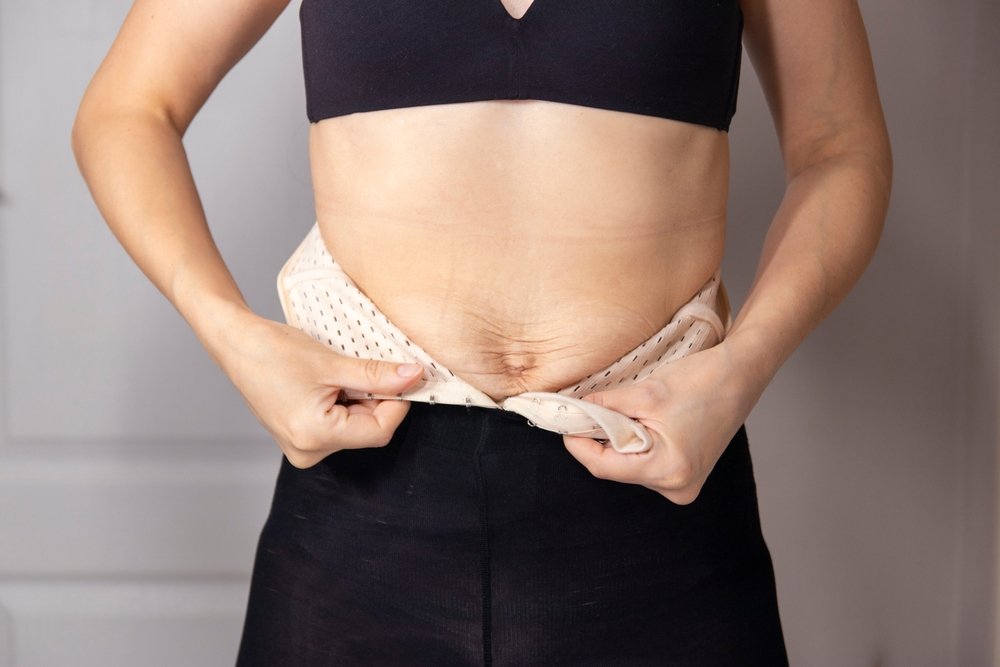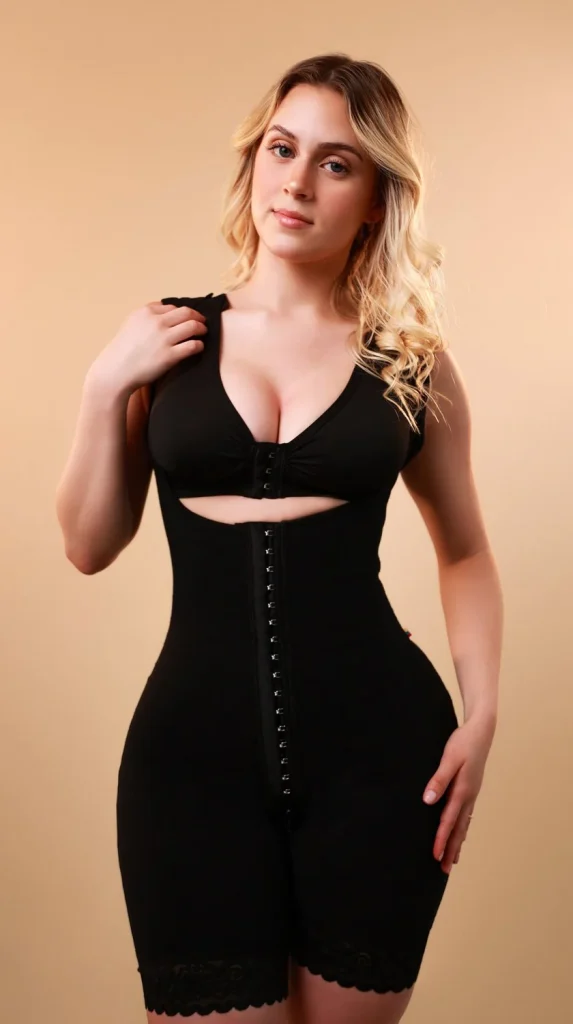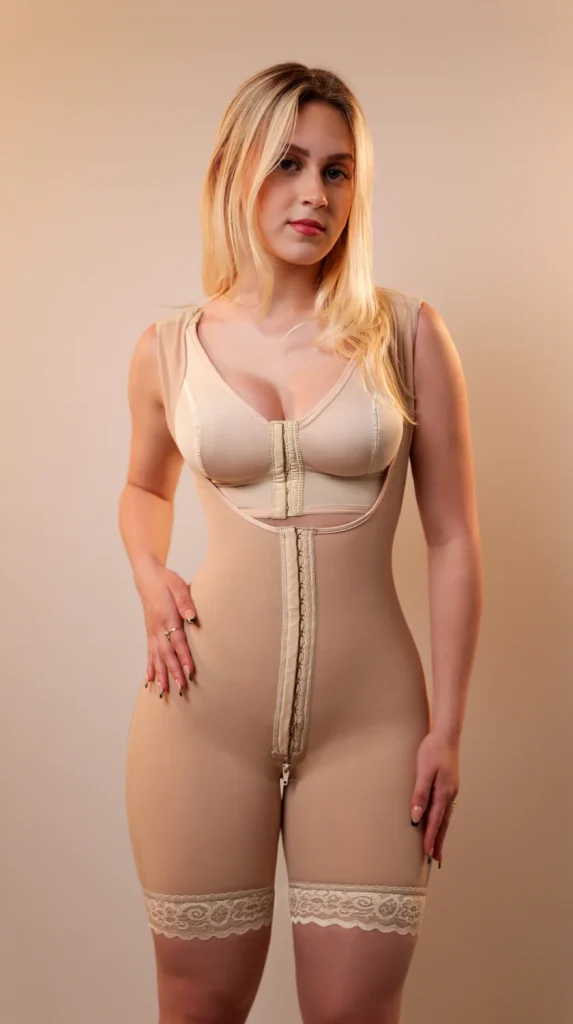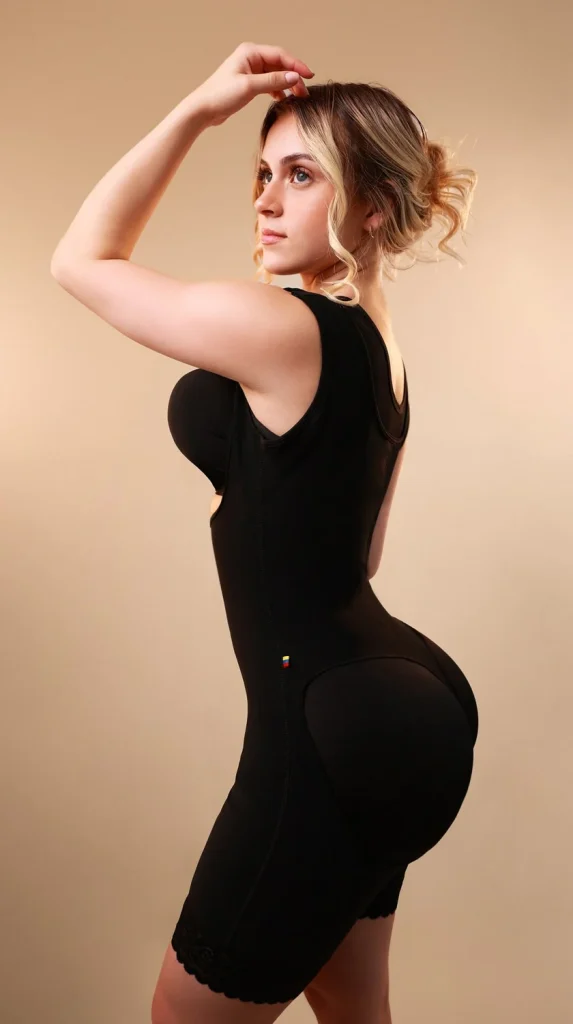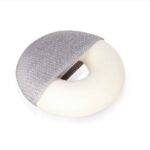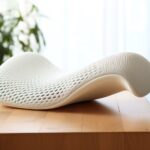After undergoing a Brazilian Butt Lift (BBL), wearing a faja (compression garment) is essential for optimal recovery and long-term results. The primary reason for wearing a faja after a BBL is to minimize swelling and support the healing process. The compression provided by the faja helps reduce fluid buildup, allowing the buttocks to maintain their newly sculpted shape. It also aids in contour retention, ensuring the desired outcome of the procedure.
By improving blood circulation to the treated areas, the faja promotes faster healing and delivers essential nutrients for tissue repair. Wearing a faja offers comfort, support, and a sense of security during the recovery period. It minimizes movement, friction, and discomfort, allowing for a smoother healing experience. Discover why do you have to wear a faja after BBL for enhanced results and a successful recovery.
The Role of Compression in Post-BBL Recovery
Compression plays a vital role in the post-Brazilian Butt Lift (BBL) recovery process. Here’s why compression is important and how it contributes to a successful recovery:
- Minimizing Swelling: Compression garments, such as a faja, apply gentle pressure to the treated areas, reducing swelling by preventing the buildup of excess fluid. This can lead to a more defined and sculpted appearance.
- Supporting Healing: Compression garments provide support to the healing tissues, promoting proper healing and minimizing the risk of complications. The controlled pressure helps stabilize the newly transferred fat cells, enhancing their adherence to the new position.
- Improving Blood Circulation: Compression stimulates blood circulation in the treated areas, delivering oxygen and nutrients to the healing tissues. This supports the healing process and promotes faster recovery.
- Contour Retention: Compression garments help maintain the desired shape and contour achieved through the BBL. By applying consistent pressure, they reduce the risk of displacement and aid in preserving the results.
- Comfort and Security: Compression garments provide a sense of comfort and security during the recovery period. They minimize movement, provide support, and reduce discomfort caused by swelling and inflammation.
It’s essential to follow your plastic surgeon’s recommendations regarding the duration and frequency of wearing compression garments after a BBL. By utilizing compression during the post-BBL recovery, you can optimize your results and promote a smoother healing journey.
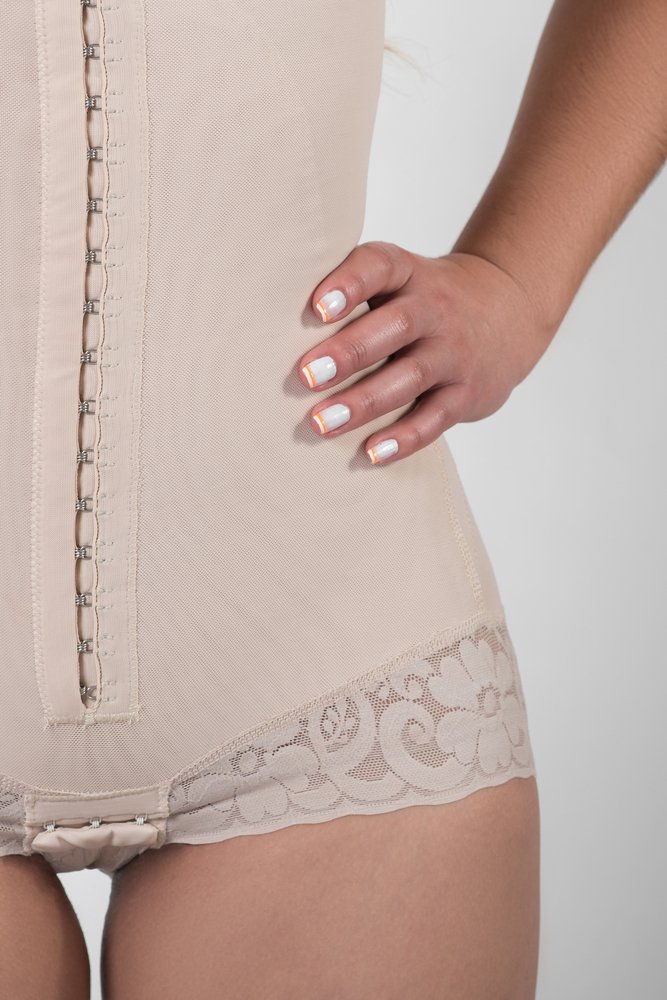
Minimizing Swelling and Fluid Retention with a Faja
Minimizing swelling and fluid retention is a crucial aspect of post-operative recovery after procedures like liposuction and Brazilian Butt Lift (BBL). A faja (compression garment) plays a significant role in achieving this goal. Here’s how a faja helps minimize swelling and fluid retention:
- Compression Effect: The tight and consistent pressure exerted by a faja helps compress the tissues, reducing the space available for fluid accumulation. This compression effect helps minimize post-operative swelling, allowing the body to heal more efficiently.
- Lymphatic Drainage Support: The compression provided by a faja assists in promoting lymphatic drainage. The lymphatic system is responsible for removing excess fluid and waste products from the body. By improving lymphatic circulation, a faja helps reduce fluid retention and accelerates the resolution of swelling.
- Contouring and Shaping: In addition to reducing swelling, a faja aids in contouring and shaping the body. It helps the skin and underlying tissues adhere to their new contours, promoting a more defined and sculpted appearance. This contouring effect contributes to a more pleasing aesthetic outcome.
- Improved Blood Circulation: The compression from a faja also improves blood circulation in the treated areas. Enhanced blood flow delivers oxygen and nutrients to the healing tissues, supporting the healing process and promoting faster recovery. Efficient circulation helps remove inflammatory byproducts and supports tissue regeneration.
- Comfort and Support: Wearing a faja provides comfort and support during the recovery phase. It minimizes movement and provides stability to the treated areas, reducing discomfort and promoting a sense of security. The added support helps relieve tension on the body, allowing for a more comfortable healing experience.
To optimize the benefits of a faja in minimizing swelling and fluid retention, it’s important to follow your plastic surgeon’s instructions regarding its proper usage.
Supporting the Newly Transferred Fat Cells: Faja’s Contouring Effect
Supporting the newly transferred fat cells is a critical aspect of post-operative recovery after a Brazilian Butt Lift (BBL). A faja (compression garment) plays a crucial role in providing support and contouring the body. Here’s how a faja supports and enhances the newly transferred fat cells:
| Supporting the Newly Transferred Fat Cells: Faja’s Contouring Effect |
|---|
| Stability and Adherence |
| Shape Retention |
| Reduced Swelling and Inflammation |
| Long-Term Results |
Enhancing Healing and Recovery Through Improved Blood Circulation
Enhancing healing and recovery through improved blood circulation is a crucial aspect of post-operative care. Here’s how a faja (compression garment) contributes to this process:
- Improved Oxygen and Nutrient Delivery: The compression provided by a faja helps improve blood circulation in the treated areas. Enhanced blood flow brings a fresh supply of oxygen and essential nutrients to the healing tissues, supporting their repair and regeneration.
- Removal of Waste Products: Efficient blood circulation facilitated by a faja aids in the removal of metabolic waste products from the treated areas. This helps to eliminate toxins and byproducts of cellular metabolism, promoting a cleaner and healthier healing environment.
- Accelerated Healing: The increased blood flow to the healing tissues promotes faster healing. Oxygen and nutrients are vital for cell regeneration, tissue repair, and collagen synthesis. Improved circulation through the use of a faja supports these processes, leading to expedited recovery.
- Reduced Risk of Complications: Optimal blood circulation plays a crucial role in reducing the risk of complications. Improved circulation helps prevent the buildup of stagnant blood and reduces the likelihood of issues such as blood clots or infection. It supports the body’s natural defense mechanisms and enhances the healing process.
- Overall Wellness: Good blood circulation contributes to overall wellness. It supports the immune system, aids in detoxification, and helps maintain the health of surrounding tissues. By promoting circulation, a faja supports the body’s overall well-being during the recovery period.
It’s important to follow your plastic surgeon’s instructions regarding the usage of a faja and any recommended exercises or activities that can further enhance blood circulation.
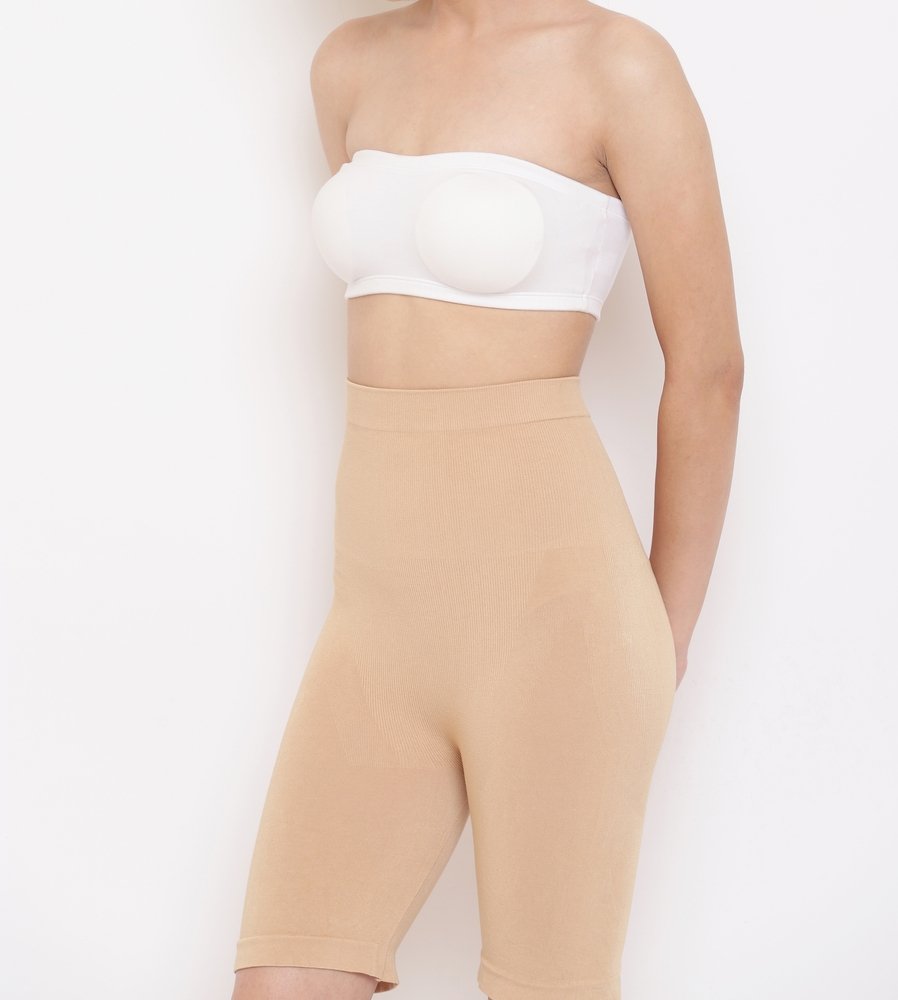
Maintaining Results: Long-Term Benefits of Wearing a Faja
Wearing a faja (compression garment) after a cosmetic procedure, such as liposuction or a Brazilian Butt Lift (BBL), offers long-term benefits in maintaining your desired results. Here’s how a faja helps in maintaining your aesthetic outcomes:
- Contour Retention: By providing consistent compression, a faja helps the skin and underlying tissues conform to their new contours. This helps maintain the desired shape and silhouette achieved through the procedure, ensuring long-lasting results.
- Reduced Swelling and Fluid Retention: Wearing a faja minimizes swelling and fluid retention, which are common after cosmetic surgeries. The compression effect helps prevent the accumulation of excess fluid, allowing the body to heal more efficiently and reducing the risk of contour irregularities.
- Skin Tightening: The compression provided by a faja promotes skin tightening by applying gentle pressure to the treated areas. This can help improve the overall appearance and firmness of the skin, reducing the potential for sagging or loose skin over time.
- Support for Healing Tissues: A faja offers support to the healing tissues, providing stability and minimizing movement during the recovery phase. This support aids in the healing process, allowing the body to establish stronger connections and maintain the integrity of the treated areas.
- Scar Management: Wearing a faja can contribute to better scar healing and minimize the appearance of scars. The compression helps flatten and soften scars, promoting favorable scar formation and blending them with the surrounding skin.
It’s important to follow your plastic surgeon’s recommendations on how long to wear the faja after your procedure. Gradually transitioning out of wearing the faja as advised by your surgeon allows the body to adjust while still providing support. Remember, maintaining a healthy lifestyle, including regular exercise and a balanced diet, is also essential for long-term results.
Faja Guidelines: Proper Usage for Optimal BBL Recovery
Proper usage of a faja (compression garment) is essential for optimal recovery after a Brazilian Butt Lift (BBL). Here are some guidelines to follow for the best results:
- Wear as Instructed: Follow your plastic surgeon’s instructions regarding when to start wearing the faja after your BBL. Typically, it’s recommended to wear it immediately after surgery and continue wearing it for a specified duration. Adhering to the prescribed timeline is crucial for proper healing and maintaining the desired results.
- Duration of Wear: Your surgeon will provide guidance on how long to wear the faja each day. Initially, it may be recommended to wear it continuously for the first few weeks, including during sleep. As you progress in your recovery, your surgeon may advise you to gradually decrease the duration of wear. Follow their instructions closely to ensure optimal support and contour retention.
- Gradual Transition: Transitioning out of wearing the faja should be done gradually, as instructed by your surgeon. They may recommend wearing it for specific periods during the day, such as during activities or for support during workouts. This gradual transition allows the body to adjust while still providing support to the treated areas.
- Proper Fit: Ensure that your faja fits properly and provides adequate compression. It should be snug but not excessively tight, allowing for comfortable movement and proper circulation. Avoid wearing a faja that is too loose or too tight, as it may compromise the desired benefits and hinder the healing process.
- Follow Hygiene Practices: Take care of your faja by following proper hygiene practices. Clean it as instructed by your surgeon or according to the garment’s care instructions. Keeping your faja clean and dry helps maintain its effectiveness and prevents any potential skin issues.
- Consult with Your Surgeon: If you have any concerns or questions about wearing the faja, consult with your plastic surgeon. They have the best understanding of your specific case and can provide personalized guidance based on your progress and recovery needs.
Remember, the guidelines for wearing a faja may vary depending on your surgeon’s recommendations and your individual healing progress. By following these guidelines and staying consistent with the faja usage, you can support optimal recovery, contour retention, and achieve the best possible results from your BBL procedure.
References:
- Mia Aesthetics. “The Importance of Compression After Plastic Surgery.” Accessed on June 19, 2021.
- Ogee Recovery. “How Long Should You Wear A Faja?” Accessed on June 29, 2022.
